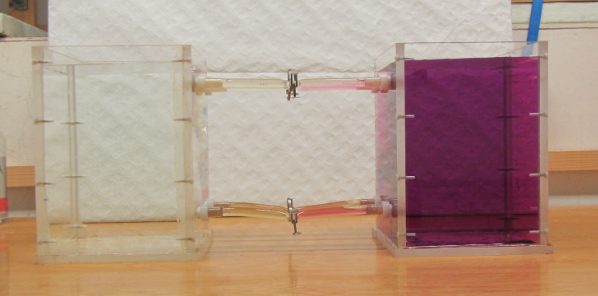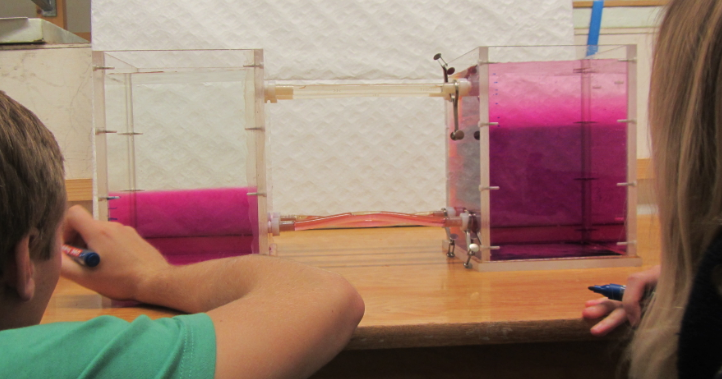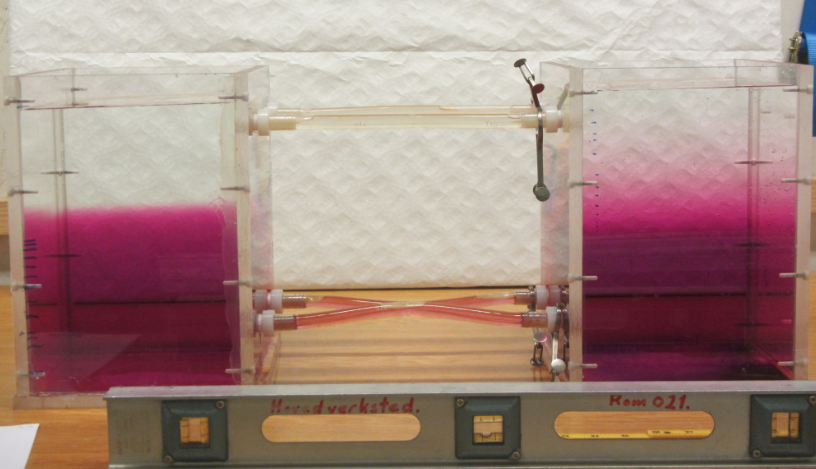
Marsigli’s experiment
Density-driven flow.
The experiment presented in this post was first proposed by Marsigli in 1681. It illustrates how, despite the absence of a difference in the surface height of two fluids, currents can be driven by the density difference between the fluids. A really nice article by Soffientino and Pilson (2005) on the importance of the Bosporus Strait in oceanography describes the conception of the experiment and includes original drawings.
The way we conduct the experiment, we connect two similar tanks with pipes at the top and bottom, but initially close off the pipes to prevent exchange between tanks. One tank is filled with fresh water, the other one with salt water which is dyed pink. At a time zero we open the pipes and watch what happens.

Two tanks, one with clear freshwater and one with pink salt water, before the connection between them has been opened.
As was to be expected, a circulation develops in which the dense salt water flows through the lower pipe into the fresh water tank, compensated by freshwater flowing the opposite way in the upper pipe.

The two tanks equilibrating.
We measure the height of the interface between the pink and the clear water in both tanks over time, and watch as it eventually stops changing and equilibrates.

The two tanks in equilibrium.
Usually this experiment is all about density driven flows, as are the exercises and questions we ask connected to it. But humor me in preparation of a future post: Comparing the height of the two pink volumes and the two clear volumes we find that they do not add up to the original volumes of the pink and clear tanks – the pink volume has increased and the clear volume decreased.
How did that happen?
Leave a Reply
Share this post via
Interference from other demonstrations. | says:
[…] Why interpreting one aspect Marsigli’s experiment might be so difficult. Remember how, in this post, I discussed Marsigli’s experiment and asked why the volume of pink water seemed to have […]
Tilting of a frontal surface under rotation | says:
[…] persist for a long time without leading to the density-driven adjustment shown in the non-rotating Marsigli experiment. This is what we demonstrate with this […]